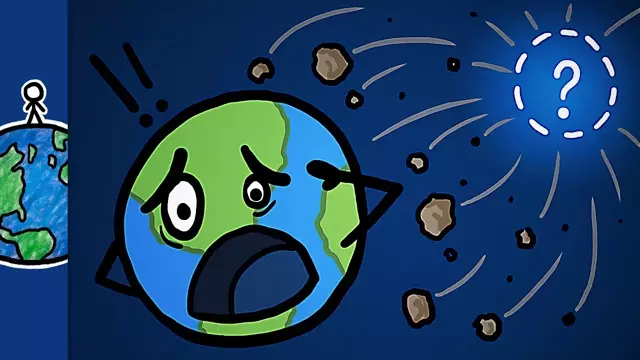2017-07-06
[public] 1.24M views, 16.9K likes, dislikes audio only
Because of space physics, one faraway asteroid is likely the progenitor of almost a third of all the meteorites on Earth.
Thanks to Skillshare for sponsoring this video: http://skl.sh/MinuteEarth
Jorge and Daniel's awesome new book, "We Have No Idea": https://www.amazon.com/We-Have-No-Idea-Universe/dp/0735211515
Thanks also to our supporters on https://www.patreon.com/MinuteEarth
___________________________________________
If you want to learn more about this topic, start your googling with these keywords:
Asteroid: A rocky body smaller than a planet that is orbiting the sun.
Meteoroid: A smaller rocky body moving in the solar system.
Meteor: A meteoroid that has entered the Earth’s atmosphere.
Meteorite: A meteor that hits the Earth.
Orbital resonance: A force that occurs when orbiting bodies exert a regular, periodic gravitational influence on each other, because of the length of their relative orbits.
Kirkwood Gap: A dip in the distribution of main belt asteroids that correspond to the locations of orbital resonances with Jupiter.
___________________________________________
Credits (and Twitter handles):
Script Writer: David Goldenberg (@dgoldenberg)
Script Editor: Alex Reich
Video Illustrator: Jorge Cham | PHD Comics
Video Director: Emily Elert (@eelert)
Video Narrator: Emily Elert (@eelert)
With Contributions From: Henry Reich, Kate Yoshida, Ever Salazar, Peter Reich
Music by: Nathaniel Schroeder: http://www.soundcloud.com/drschroeder
_________________________________________
Like our videos?
Subscribe to MinuteEarth on YouTube: http://goo.gl/EpIDGd
Support us on Patreon: https://goo.gl/ZVgLQZ
And visit our website: https://www.minuteearth.com/
Also, say hello on:
Facebook: http://goo.gl/FpAvo6
Twitter: http://goo.gl/Y1aWVC
And download our videos on itunes: https://goo.gl/sfwS6n
___________________________________________
If you liked this week’s video, we think you might also like:
A terrifying but fascinating look at the destructive power of potential meteorites: http://www.purdue.edu/impactearth/
___________________________________________
References:
Burbine, T., McCoy, T., Meibom, A., Royer, C., Gladman, B., and Keil, K. (2002). Meteoritic Parent Bodies: Their Number and Identification. Asteroids III. 653-667. Retrieved from: http://adsabs.harvard.edu/abs/2002aste.book..653B
Farinella, P., Gonczi, R., Froeschle, Ch., and Froeschle, C. (1993). The Injection of Asteroid Fragments into Resonances. Icarus. 101: 174-187. Retrieved from: http://www.sciencedirect.com/science/article/pii/S001910358371016X
Fieber-Beyer, S., Gaffey, M., Bottke, W., and Hardersen, P. (2015). Potentially hazardous Asteroid 2007 LE: Compositional link to the black chondrite Rose City and Asteroid (6) Hebe. Icarus. 250: 430-437. Retrieved from: http://www.sciencedirect.com/science/article/pii/S0019103514007088
Gaffey, M. and Gilbert, S. (1998). Asteroid 6 Hebe: The probable parent body of the H-type ordinary chondrites and the IIE iron meteorites. Meteoritics and Planetary Science. 33: 1281-1295. Retrieved from: http://onlinelibrary.wiley.com/doi/10.1111/j.1945-5100.1998.tb01312.x/abstract
Vokrouhlicky, D., and Farinella, P. (2000). Efficient delivery of meteorites to the Earth from a wide range of asteroid parent bodies. Nature. 407: 606-608. Retrieved from: https://www.nature.com/nature/journal/v407/n6804/full/407606a0.html
Moons, M. and Morbidelli, A. (1995). Secular Resonances in Mean Motion Commensurabilities: The 4/1, 3/1, 5/2, and 7/3 Cases. Icarus. 114: 33-50. Retrieved from: http://www.sciencedirect.com/science/article/pii/S001910358571041X
Burbine, Thomas. (2017). Assistant Professor of Astronomy, University of Massachusetts. Personal Communication.
https://www.patreon.com/minuteearth
/youtube/channel/UCeiYXex_fwgYDonaTcSIk6w
https://www.patreon.com/minuteearth
/youtube/video/4DF94Wvtekk

